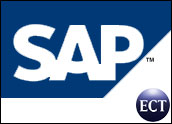
Scott Fitzgerald once famously observed that there are no second acts inAmerican life. I don’t agree because for me, if anything, America is,and has always been, the land of the second chance.
On this topic, William Faulkner comes much closer to the reality that I know. I’vealways been partial to an observation that one of his characters made onthe subject: “You can always change your name and move to Texas.”
Fitzgerald might have been anticipating the technology industry with hisobservation. Certainly the tech sector is littered with the carcassesof many dead companies — one-trick enterprises that bloomed once andfailed miserably as the market changed and they couldn’t.
I worked for my share of them and, ironically, it was great training for an analyst.Sometimes I think that social networking applications were specificallyinvented by a few techies trying to keep tabs on the alumni of some ofthese failures.
Changing Leadership in CRM?
The context of failure and redemption provides an interestingopportunity for examining the CRM industry. CRM has existed as adiscipline for a decade, and in the last couple of years, we’ve seen whatwas once a steep growth curve fall over on its side only to revivesomewhat as the economy gains momentum.
Many people wonder whether or not there might be a change of leadership coming, if the original leaders have lost their way, and whether or not CRM even has a future. Far-sighted prognosticators wonder what that future might look like; will CRM continue as a free-standing technology or will it become part of a few mega suites that seem to be evolving.
I am on record believing that the current state of the market inenterprise software is at a high point of complexity and that the nextmove is not greater consolidation but greater flexibility throughmodularity and improved integration facilities. We see plenty ofexamples from leading vendors to lend credence to this hypothesis.
Salesforce.com is articulating a strategy that uses a standardizedplatform (Sforce) and confederation of developers to enable broad-scaledevelopment and integration of business applications from disparatesources that run as one. Siebel has been aggressively promoting itsUniversal Application Network (UAN) for a couple of years, most recentlymaking it available to its hosted customers as Integration OnDemand.And SAP has been touting its X-Apps for similar purposes.
A New Chapter in Enterprise Software?
Taken to a logical conclusion, these technologies spell the beginning ofa new chapter in enterprise software in which there will be a two-tierbusiness model consisting of publishers and developers of software.
The tiers will produce a hub-and-spoke model, with many developers buildingapplications to the standards of a few publishers. It will be thepublishers who deal most directly with the customers, and the idea of amonolithic application suite pursued by some of the largest companies insoftware today will be achieved by committee, not the lone cowboy.
Last week my phone rang frequently with reporters asking me what I thoughtabout Siebel’s announcement that it would miss its quarter projection and othersasking me about the significance of SAP’s announcement that it expectedgrowth of 15 percent. Was this evidence of a change of leadership in CRM?
Predictably, SAP’s and Siebel’s stock prices went in opposite directions.Given my view of the continuing evolution of the industry, it’s hard tosay much of anything about these data points other than to point out theobvious.
SAP offers multiple lines of applications while Siebel ispositioned in CRM exclusively and SAP is currently in the process ofupgrading its nearly 20,000 customers to its newest product, MySAP.
Further Evolving CRM
Clearly, at this point in time, the last generation of CRM has caught onwith mainstream buyers, and there are many vendors still standing thatcan articulate that vision and deliver credible solutions. Butmainstream buyers are not the ones who push the envelope, and someoneneeds to be riding ahead of the pack, scouting out the next challengesand developing the solutions for the next big leap.
Historically, in CRM at least, one of those vendors has been Siebel.They were first, or among the very first, to consolidate a suite of CRMapplications, to develop vertical market CRM applications, and toembrace analytics. They were even among the first to attempt a hostedsolution, and although that first attempt failed, they’ve come back with avery credible offering.
To amend Fitzgerald, most companies don’t have second acts, but veryfrequently the leaders from one round get a chance to move the industryahead in the next generation. Right now I think we are waiting for thatgeneration of technology and its business model to get here — likesurfers hanging out on their boards waiting for the next wave. AndSiebel is doing a lot to make that new generation, whatever its ultimateconfiguration, a reality.
When a company fails to meet its projections, its stock should bepunished. However, there is a distinction between a viable short terminvestment and a viable long term company, and too often we confuse thetwo. If Siebel can’t make its quarter its stock should sell at adiscount, that’s common sense.
But short selling can be overdone, andbefore we write the company off all together, we need to keep in mindthat it is Siebel, at least as much as any other company, that is drivingthe direction of innovation in CRM.
Denis Pombriant is former vice president and managing director of Aberdeen Group’s CRM practice and founder and managing principal of Beagle Research Group. In 2003, CRM Magazine named Pombriant one of the most influential executives in the CRM industry.























































